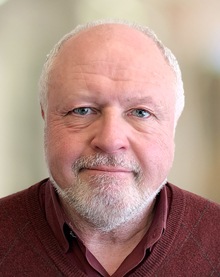The Hidden Geometry of Flowers: Living Rhythms, Form, and Number
The Hidden Geometry of Flowers: Living Rhythms, Form, and Number
Keith Crichlow
Edinburgh: Floris, 2011. 446 pp., paper, $50.
Keith Critchlow is one of the world's foremost experts on sacred geometry. His name has been familiar to me since the early '70s, when my former husband discovered his book Order in Space, propelling him into an enduring fascination with the mystical side of geometry. I, however, am geometryshy, despite having a maths teacher as a father, who despaired at my lack of ability. But in the spiritual traditions I was drawn to, particularly the Kabbalistic Tree of Life and astrology, I discovered that you can't go far with without confronting your inner geometrical demons. The structures involved and their significance demand at least a basic engagement with the concepts of spheres, solids, and divisions of space. Moreover, using the part of the brain that deals with pure geometrical shapes can propel one into a state of lucidity. To get there, one has to move beyond both the normal "thinking mind" and the film screen of imagination.
So the title of this book instantly intrigued me. For Critchlow, "what is evident in the geometry of the face of a flower can remind us of the geometry that underlies all existence. Studying the geometry of flowers is therefore a powerful way to reconnect us with the idea that we are all one"
At over 400 pages, this is a long work, but it is full of superb illustrations, providing instant appeal. Most are in color, but a wonderful exception is a sequence of grainy black-and-white photos, showing how a moon daisy progresses from bud to fully formed flower. Critchlow ties it into his theme by encouraging us to see the emerging geometrical forms in the flower: spiral, cone, and hemisphere.
Although the volume is lavishly illustrated, it is also a book of substance as far as the writing is concerned. The author gives us a veritable compendium of flower studies, including fruit and leaves, structuring it around the philosophical and geometrical concepts he wishes to convey. Flowers, he says, can be understood at four different levels: the material, the social and psychological, the cultural and mythological, and at the highest level, the inspirational. This theme is developed through the book, along with the geometrical idea of a flower expanding during growth from point to line, to plane, and to solid. Critchlow manages to convey the implicit geometry of natural forms as ideas that we can grasp without special knowledge or training, and which may continue to influence us as we observe and experience the world of nature.
This is an achievement of the highest order. The book is an important resource, and will remain on my bookshelf as something to read and dip into over the years to come. My only concern is that Critchlow throws in so many citations from philosophy and mythology to explain the basis for his explorations. In the mix are Socrates, Plato, Aristotle, the Vedas, chakras, Buddhism, Christian symbolism, Goethe's theories, and Anthroposophical and Kabbalistic schemas. It is a kind of glorious compost heap for growing the flowers, but it's the plants themselves that are most important here! I think that the reader will either know the basis of the perennial philosophy and have his or her own references to underpin the text, or, if new to these ideas, will struggle to digest them. However, I also consider this to be a book which will "grow" on the reade, to extend the flower analogy, and it is full of memorable quotes, which the mathematically challenged reader (like me), or the newcomer to the perennial philosophy, can hold on to while waiting for full understanding to emerge. Try this one, for instance: "Life takes time to possess space in spiral form"
Critchlow cuts to the chase in part three, "The Geometry of Flowers," explaining the principles of geometry as they relate to flowers and to life itself. He highlights the fundamental importance of symmetry, the principle of right- and left-handedness, both in terms of balance in the human body and of the growth of flowers, which frequently develop into a fivefold arrangement, echoing the Golden Proportion. The range of five-based flowers is vast, from the humble herb Robert or Robert's geranium (Critchlow's personal favorite) to fruit blossoms, poppies, and of course the rose. He systematically goes through all the different arrangements of flower geometry, from the rare single flower, such as the arum lily, to the prolific twenty-oneness of the daisy. Clues to their significance are given, for instance, that four is "the number of worldly order" and six embodies the idea of "perfection," but quite rightly, I think, readers are encouraged to come at interpretation by studying the forms and flowers themselves. For those who delight in the analysis of the mathematical constructs, there is plenty more material included in his explanations to chew over in the following section, "The Flowers of Geometry"
Above all, Critchlow encourages us to marvel at flowers: "These delicate, mysterious, vulnerable, beautiful life forms (even the most modest of then) can be used as a metaphor for our overall need to satiate our wonderment" This is the joy of the experience he invites us to cultivate, and which he conveys so well in this remarkable book.
Cherry Gilchrist


 Spooky action at a distance. Three times.
Spooky action at a distance. Three times.